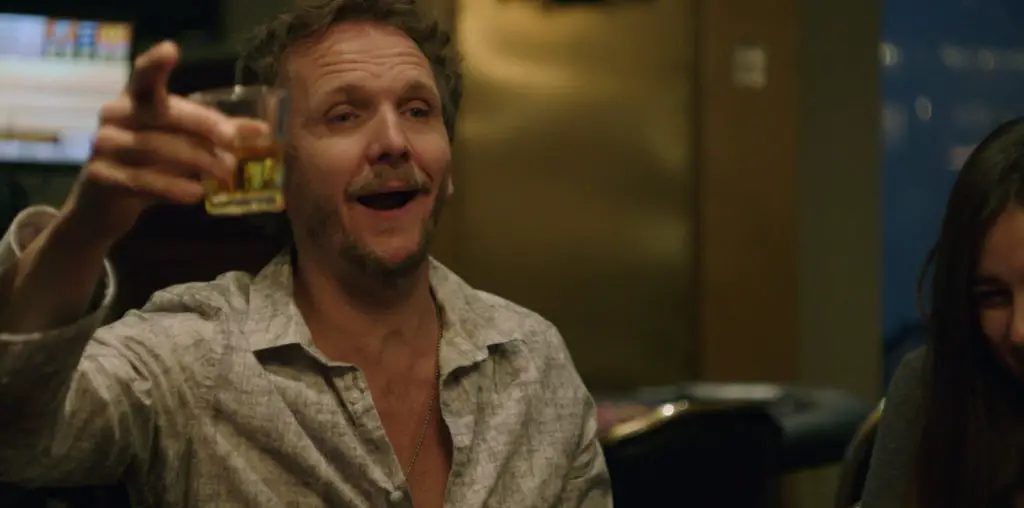
So what happened to the prints of “Frankenstein”? As with many silent films, prints were scattered to collectors, or left to deteriorate due to improper storage, or were destroyed when the introduction of talking pictures effectively ended the commercial viability of silent movies. As a film which was barely remembered, “Frankenstein” disappeared fairly easily.
However, in 1963 film historian Edward Connor came across the March 15, 1910 edition of The Edison Kinetogram, an in-house publicity magazine for exhibitors highlighting the new films from this top studio. The cover featured Charles Ogle in full monster make-up, snarling for the camera with a subhead reading “Scene from Frankenstein.” The discovery was startling…no knowledgeable film historian knew this production ever existed. There was an immediate frantic search for more information on this lost treasure. A second issue of The Edison Kinetogram turned up in London which provided full credits for the production, but no print could be located.
The frustration that this pioneering work of the horror genre gnawed at cinephiles (thanks in large part to Forrest J. Ackerman’s legendary magazine “Famous Monsters of Filmland” and its hearty coverage of the lost film). The search for the film became so intense and futile that in 1980 the American Film Institute included “Frankenstein” on its list of the ten most “culturally and historically significant lost films.” It shared a berth alongside the original 42-reel version of Erich von Stroheim’s “Greed” and Walt Disney’s lost 1922 cartoon “Little Red Riding Hood.”
Strangely, a few years prior to the AFI list, producers of a BBC documentary on film history included a few minutes of “Frankenstein” as part of their program. What the AFI and most film historians failed to realize was that one extant print of “Frankenstein” survived in the private archive of Alois Detlaff, a Milwaukee film collector. Mr. Detlaff had acquired the print in the mid-1950s from a fellow collector and had devoted considerable time and energy to preserving the badly-battered film, which was missing its opening credits. In the 1970s, Mr. Detlaff allowed a few minutes of “Frankenstein” to be shown in the BBC program, which was later released on home video. Upon learning of the AFI list, Mr. Detlaff contacted the organization to announce the film survived. While this might seem like the ideal end to the story, new problems arose.
Since the Edison film company had disbanded, “Frankenstein” had fallen into the public domain. Although he was solely responsible for the film’s preservation, Mr. Detlaff could not claim the copyright on the film. In fact, the snippets which appeared in the BBC production later wound up in several video compilations of silent cinema, without providing credit or payment to Mr. Detlaff. Although he provided two public theatrical screenings of the film in Milwaukee, the film has not been screened in its entirety.
A poor compromise later arose in a special video version designed to be shown at horror film conventions. The video, which was actually a film of the projected film, was disfigured with a distracting and annoying copyright protection scroll that crawled through the middle of the picture. This video version has earned unanimous condemnation for being nearly unwatchable, yet to date it was the only chance to actually see the entire 15-minute film.
Requests by museums and archives for the donation of the print have been refused by Mr. Detlaff, who has requested (but has yet to receive) a financial agreement to his satisfaction, and inquiries by film distributors to show the film have not been successful. In 1997, Mr. Detlaff announced plans to release “Frankenstein” along with an original 35mm nitrate print of “Nosferatu” on a single home video, thus providing a double-feature line-up of the first Frankenstein and Dracula films together. Unfortunately, plans for this release stalled due to problems with the production of the video and Mr. Detlaff’s poor health. This video, which was to have been distributed via LRS Marketing, has yet to be made available.
While the official video release is on indefinite hold, the version with the annoying protection scroll can be obtained from writer Frederick C. Wiebel Jr., who also self-published “Edison’s Frankenstein.” This invaluable text tracing the long and tortured history of this unique film, and includes copies of the original press coverage from 1910 of the film’s release plus a rare interview with Mr. Detlaff on his preservation efforts. Those interested in obtaining a copy of the and the “copy protected” video should contact Mr. Wiebel at firezine@intrepid.net.
Interest in the Edison version of “Frankenstein” has yet to abate. A copy of the film, based on the video with the protective scroll, recently turned up on the Internet for webcast viewing, but was later abruptly removed with no explanation. And a company named Explosion Toys got into the act recently with a $13.99 figurine of the Charles Ogle monster (although a quick online glimpse of the toy at http://www.explosion-toys.com/store/mez007.html suggests the doll designer’s observatory skills are lacking, as the doll looks nothing like its screen inspiration).
Thus, the first attempt at horror film production still eludes us. Hopefully in the very near future audiences will be able to see where and how the genre began and “Frankenstein” will finally be accorded the level of classic it long deserves.
Check out FILMTHREAT.com’s FEATURE ARCHIVES and read more insightful stories, expert analysis, gut-busting satire and caustic commentary!
